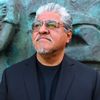Recent headlines scream out about the vicious violence and murders linked to the Central American gang MS-13 across Long Island. The federal government claims MS-13 and their main rivals, 18th Street, are in almost every state of the union, Canada, parts of Mexico, and wrecking havoc in El Salvador, Honduras, and Guatemala.
For twenty years Mara Salvatrucha-13 and 18th Street brought devastating violence to the poor and war-torn country of El Salvador, helping make it the most violent country in the hemisphere. However, now after 100 days on June 16, 2012, a delicately-balanced peace treaty among the two gangs in El Salvador has resulted in a 58 percent reduction in violence-related cases and the saving of close to 800 lives. Is it possible for civil society to cooperate and bring badly needed resources to the table? Is it possible for businesses with jobs and training; educational institutions; treatment centers, including for trauma, drugs, and physical concerns; churches, including Evangelicals, Catholics and indigenous spiritual practitioners; non-governmental agencies; and even police, prisons, and governments on both sides of the border to come to bear to insure this peace is complete and long-lasting?
This is the current window of opportunity that exists in El Salvador with ramifications not just for Central America, but the United States and other countries as well. I'm convinced peace can finally find a long-elusive berth in El Salvador, that often from the most violent people and circumstances can come the most peaceful.
I have been studying and writing about MS-13 and 18th Street in Central America, Mexico, and the United States for twenty years, including with a grant from the Center for Documentary Studies out of Duke University. These gangs were originally born in the streets of the Pico-Union barrio in Los Angeles: 18th Street in the 1960s with Chicano/Mexican youth that later integrated Central American refugee youth during the 1980s, and MS-13 in the mid-1980s. Both gangs, like the African American Bloods and Crips and Mexican cholo gangs that numbered in the hundreds in L.A., grew stronger and more entrenched during the worse period of gang violence in the Los Angeles area -- 1980 to 2000, when an estimated 15,000 people were killed. Unfortunately, one of the ways federal and local governments dealt with the violence was to deport tens of thousands of alleged gang youth, especially those with arrest records. Since the mid-1990s this led to more than 700,000 deportees, mostly to Mexico and Central America. These numbers are enough to change whole cultures. And that's exactly what happened in El Salvador with intense poverty and a war-torn economy (a civil war from 1980 to 1992 led to 75,000 lives lost and a million refugees).
I visited El Salvador in 1993 to meet with gang youth, their families, government officials, and two prisons as well Los Angeles-area barrios and prisons. In 1996, I was invited back to speak and help broker a tentative peace agreement between members of MS and 18th Street that also included church leaders, non-governmental agencies, mayors of various cities, and representatives of the new National Police. However, official government policies at the time undermined peace efforts by later creating "Mano Dura" (Firm Hand) anti-gang mandates that included massive sweeps of tattooed youth and more prisons as well as helping inculcate "social cleansing" thinking among the populace, furrowing the ground for extra-legal terror groups like anti-gang death squads. Now I'm part of the Transitional Advisory Group in Support of the Peace Process in El Salvador. We were created to bring some of the best minds and experiences among gang intervention experts, urban peace specialists, researchers, and spiritual practitioners from the United States into this important peace process.
I'm also the author of the 1993 bestselling memoir of gang life, Always Running, La Vida Loca, Gang Days in L.A. and it's 2011 sequel, It Calls You Back: An Odyssey Through Love, Addiction, Revolutions, and Healing. I also wrote Hearts & Hands: Creating Community in Violent Times that documents my forty years of work in this area of youth development and gang peace, including with Chicano/Mexicans gangs in the 1970s till today as well as Mexican, Puerto Rican and African American gangs in Chicago and L.A. during the 1980s to the present. I'm also co-creator with 40 other peace leaders of the Community-Based Gang Intervention Model adopted by Los Angeles in February of 2008.
My experience is that when peace comes knocking, we need to open as many doors as possible to let it in. This always has pitfalls, is fraught with danger, but the difficulties are worth overcoming for every life saved, for the sake of all our children.
